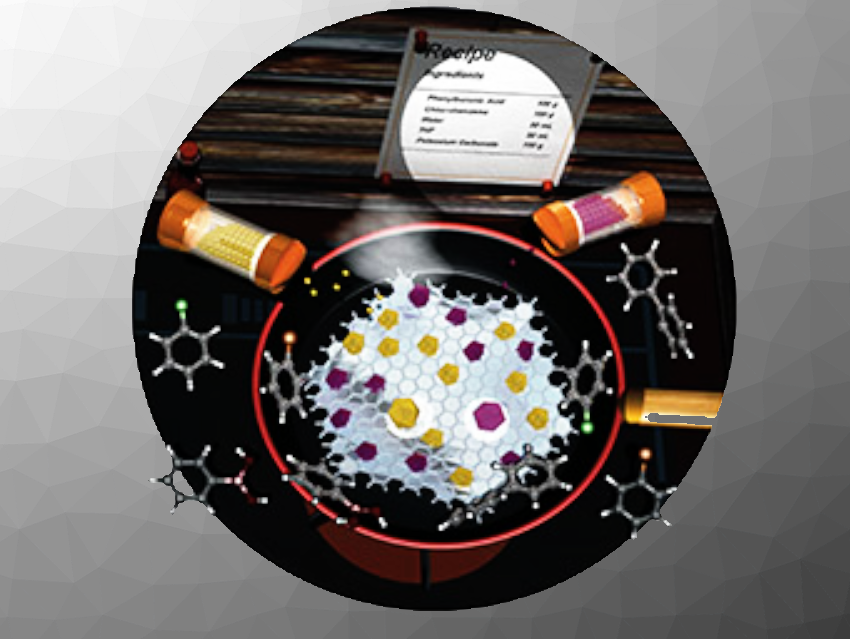In this issue, F. Zhang et al. review luminescence lifetime imaging based on lanthanide nanoparticles, and G. K. S. Prakash et al. summarize work on low-temperature catalysis of the homogeneous hydrogenation of CO2 and CO to methanol. The Minireviews deal with upgrading organic compounds through the coupling of electrooxidation with hydrogen evolution (X. Feng et al.) and energy transfer from chemiluminescent spiroadamantane 1,2-dioxetane probes for bioanalyte detection and imaging (H. N. Kagalwala, A. R. Lippert). In a Scientific Perspective, S. Grimme et al. suggest best-practice DFT protocols for basic molecular computational chemistry.
In the original research section, T. Haino et al. report the synthesis of metal nanoparticles on lipophilic nanographenes (see picture). E. Anaya-Plaza et al. found a greener route to blue through the solid-state synthesis of phthalocyanines. M.-R. Gao et al. suppressed electron back-donation for a highly CO-tolerant fuel cell anode catalyst via cobalt modulation. F. Dielmann et al. succeeded in the oxidative fluorination of selenium and tellurium compounds using a thermally stable phosphonium SF5− salt accessible from SF6.
- Angewandte Chemie 42/2022: Greener Routes,
Angew. Chem. Int. Ed. 2022, 61 (42).



